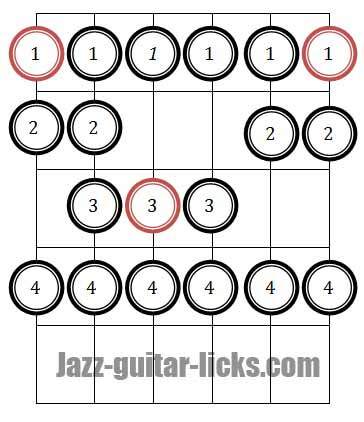Bebop Licks Guitar Pdf Torrent
Guitar tablature is written on a tablature staff with six lines that. Chords are shown above the line of music as the chord name. Blues, jazz, and soulful rock.”. The line then drops to the root of C, then anticipates the A7b9 chord by a beat with its 3 rd and 5 th. Finally up to the 7th and root of the A7b9 chord, arriving back at the pickup. BEBOP PERPETUAL MOTION FIGURE 7 Dm7 G7 CM A7b9 The first three notes descend the Dm7 scale.
• • • Bebop is one of the most exciting, engaging, and popular jazz styles, and has captivated guitarists for decades. Though you may dig the bebop sound and want to learn to play it on guitar, it’s easy to be overwhelmed and not know where to start in your practicing.
To help you explore bebop sounds in your playing, without the stress, this lesson teaches you the essential first steps in beginning bebop guitar. In the early 1940s, a new jazz style emerged from the displeasure some jazz musicians had with the commercialism of swing music. Musicians like saxophonist Charlie Parker, trumpet player Dizzy Gillespie, pianist Thelonious Monk, and other young jazz players reacted against the big dance bands by playing a kind of music characterized by advanced harmonies, frantic tempos, rhythmic intricacies and long improvisations. They were more interested in developing the technical aspects of music and increasing its aesthetic qualities, rather than enlarging their audience and wallets. There is much to be learned out of bebop today. Every jazz musician should be familiar with its language and techniques. This tutorial will help you to start learning bebop, we’ll have look at the concepts, vocabulary, scales, and techniques that are typical for this popular jazz style.
Go slow with the exercises below, have fun with them, and enjoy your bebop guitar journey. What You Will Learn In This Bebop Lesson • • • • • • • • • • • • • • • • • • • • • • • • • Bebop Tunes & Guitar Players Before you dive into learning how to play bebop guitar, here are 10 tunes to get the bebop sound into your ears. Listening to a style of jazz is just as, or more important than learning material on the guitar. If you wanted to learn a language but didn’t know what that language sounded like, it’d be tough to learn. It’s the same with learning a musical language such as bebop. As you work on bebop concepts, spend time each day listening to bebop in order to understand the sounds you’re aiming for in your practicing and performing.
• Anthropology • Bebop • Bouncing With Bud • Confirmation • Donna Lee • Groovin’ High • Hot House • In Walked Bud • Scrapple from the Apple • Yardbird Suite • Blues For Alice Here are some bebop guitar players for you to check out: • • • • • • Jimmy Raney • Herb Ellis • Tal Farlow Playing The Chord Changes Before bebop, improvisations were based on the melody of a tune. A bebop improvisation is based on the harmony of a tune with little or no reference to the original melody. A bebop improviser should be able to outline a tune’s harmony in his solos.
When you listen to a bebop improvisation and you would take away the accompaniment, you can still hear the chords of the standard in the improvised lines. A way of doing this is by putting emphasis on the chord tones. To be able to do this you should know your very well in all positions on the neck.
Another thing that can help you outline the harmony is voice leading. Arpeggio Up Scale Down One of the most overlooked concepts in bebop is playing arpeggios up and scales down. You don’t always play arpeggios up and scales down, but this is an important and easy way to begin studying bebop on guitar. To help you get this sound into your ears and under your fingers, here are three examples of arpeggios up and scales down to explore. Blood mod 1.7.10. Minor The first exercise uses a Dm7 arpeggio up and down.

Work this pattern in a few keys first, then take it to other positions before adding it to your solos over in tunes and progressions you’re studying. Listen and Play Along.
Chromatic Notes One of the most important concepts in bebop is tension and release, especially with the use of to achieve this sound. While chromatic notes are an important bebop sound, you can’t achieve a solid line by randomly adding chromatic notes into your scales and arpeggios. Instead, it’s the use of organized chromatic notes that helps build the bebop sound in your solos.
